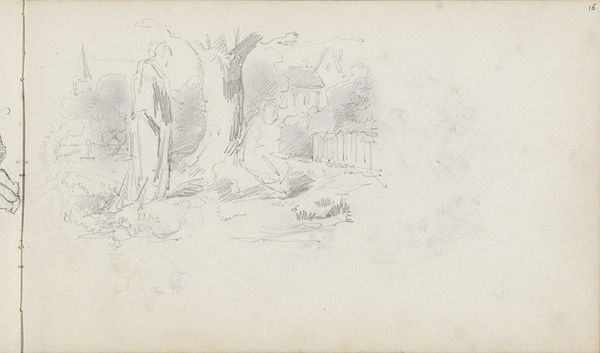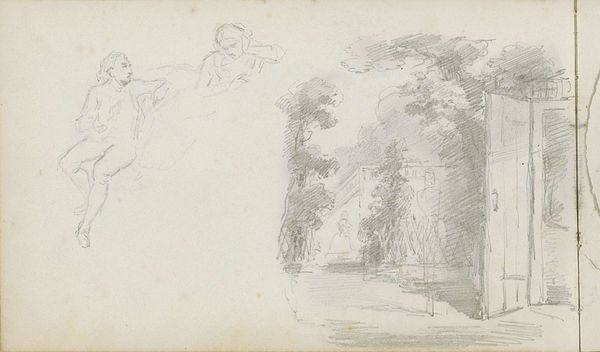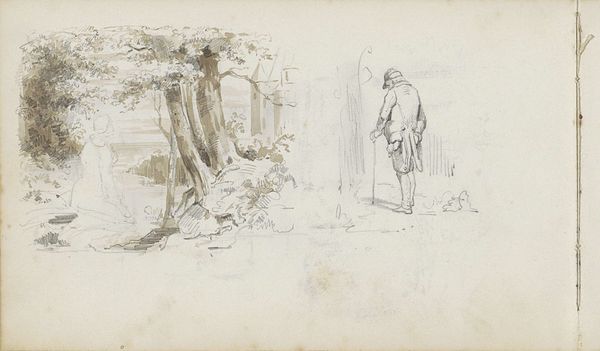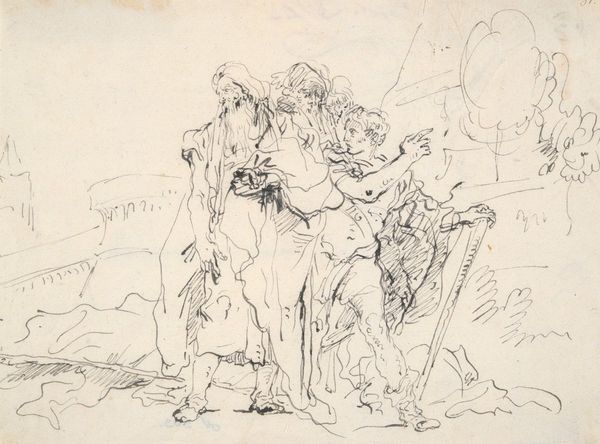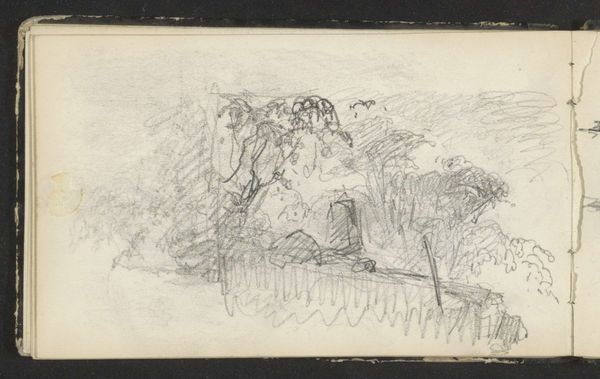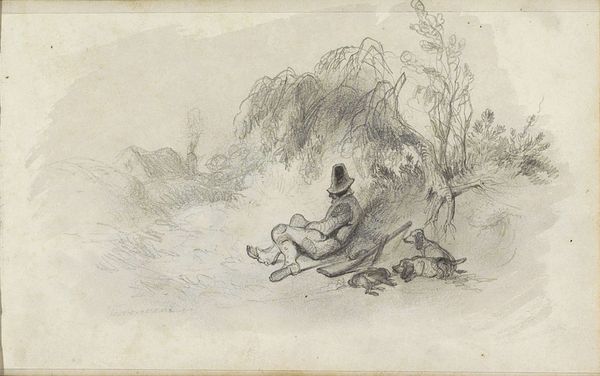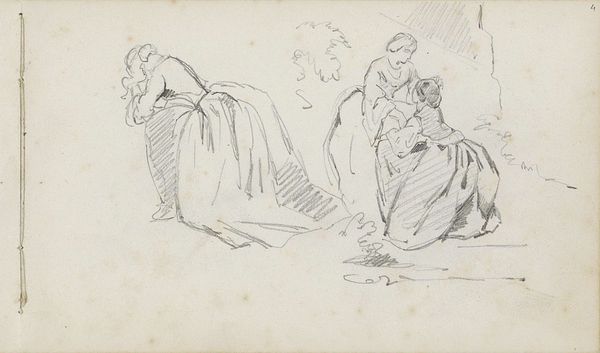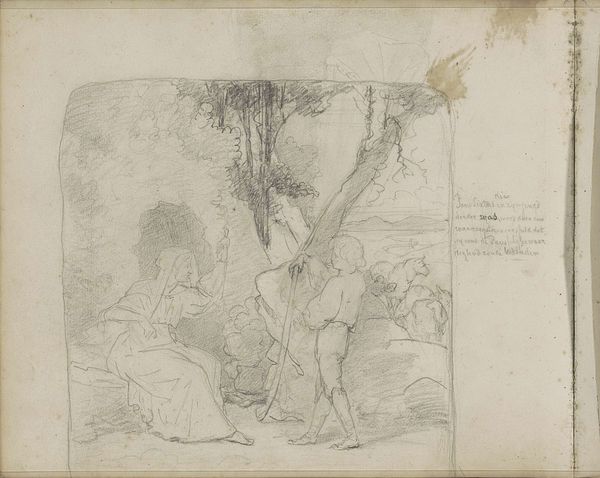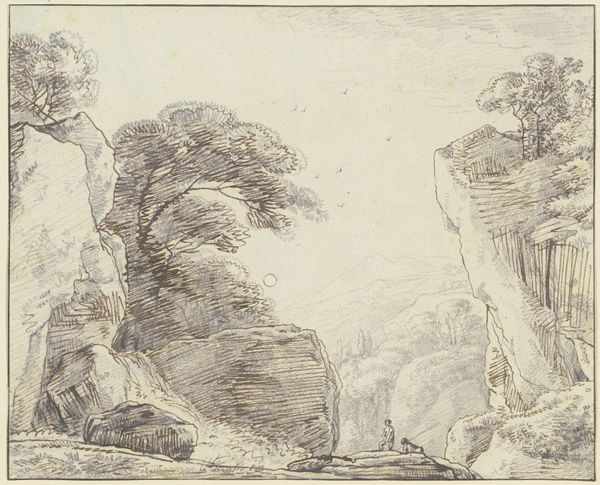
Elkaar omarmend paar en een zittende man onder een boom c. 1840 - 1860
0:00
0:00
drawing, paper, pencil
#
portrait
#
drawing
#
pencil sketch
#
landscape
#
figuration
#
paper
#
forest
#
group-portraits
#
romanticism
#
pencil
#
sketchbook drawing
Copyright: Rijks Museum: Open Domain
Curator: Welcome. We're looking at a page from Charles Rochussen's sketchbook, created sometime between 1840 and 1860. This work, "Elkaar omarmend paar en een zittende man onder een boom", or "Embracing couple and a seated man under a tree," showcases his talent with pencil on paper. Editor: It feels incredibly intimate, almost like glimpsing a private moment. The composition is split into two vignettes; the left, two figures embracing, is soft, ethereal, while the right feels a bit more grounded, contemplative. Curator: Rochussen worked during a time of great social upheaval in the Netherlands, with growing calls for democratic reform. I see this drawing reflecting those shifting social dynamics. The intimate embrace contrasted with the solitary figure might hint at changing ideals of personal connection. Editor: That's a fascinating take. I'm drawn to the embrace. It speaks of shelter and connection within nature, reflecting a deeply rooted Romantic sentiment. Consider the way the couple seems to fade into the light—their forms almost symbolic. Curator: Indeed. While symbolism might be part of Rochussen's intent, we shouldn't overlook the context of the art world at the time. Rochussen was part of a wave of artists democratizing artmaking; prints and drawings like this allowed art to be more accessible and were also useful tools for disseminating particular social messages. Editor: Absolutely, the Romantic era does love those visual shorthands though, doesn't it? Notice how the lone man mirrors poses common to depictions of melancholic figures from mythology. There is a profound sense of yearning captured in his posture. Curator: Agreed. Rochussen provides a nuanced glimpse into the emotional lives of people navigating a rapidly modernizing world. These seemingly disparate groupings underscore broader shifts in social norms. Editor: Seeing the world through Rochussen's eye makes you wonder about the timeless need for connection, reflection, and shelter within the grand theater of life. Curator: It offers an important lens through which to appreciate Dutch social transformation during this formative period.
Comments
No comments
Be the first to comment and join the conversation on the ultimate creative platform.
